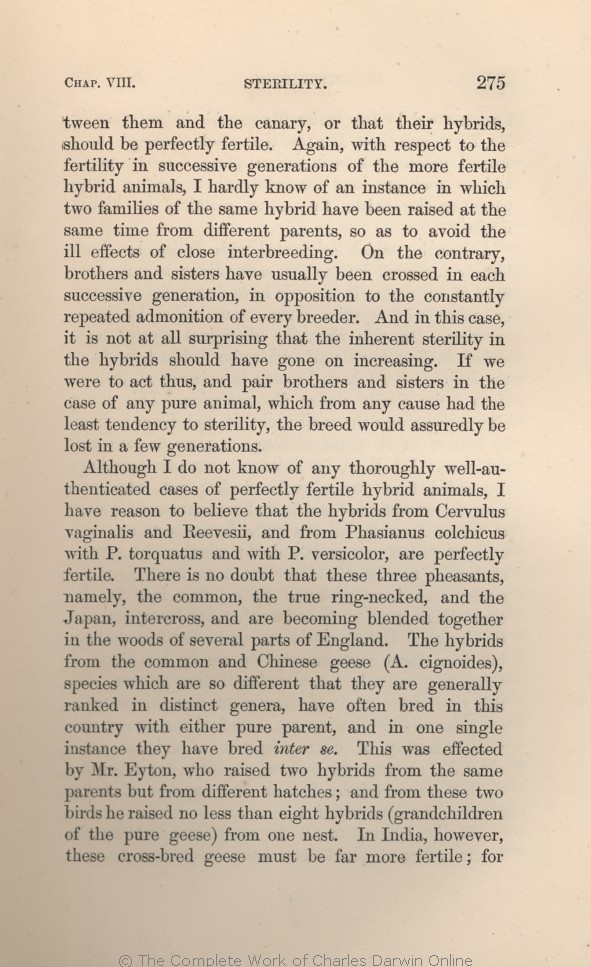them and the canary, or that their hybrids, should be perfectly fertile. Again, with respect to the fertility in successive generations of the more fertile hybrid animals, I hardly know of an instance in which two families of the same hybrid have been raised at the same time from different parents, so as to avoid the ill effects of close interbreeding. On the contrary, brothers and sisters have usually been crossed in each successive generation, in opposition to the constantly repeated admonition of every breeder. And in this case, it is not at all surprising that the inherent sterility in the hybrids should have gone on increasing. If we were to act thus, and pair brothers and sisters in the case of any pure animal, which from any cause had the least tendency to sterility, the breed would assuredly be lost in a
..| ..... 1861 1866 1869 | | very 1859 1860 |
|
Although I
do not | do not 1859 1860 1861 1866 1869 | do not 1872 |
| any 1859 1860 1861 1866 1869 | | hardly any 1872 |
| ..... 1861 1866 1869 1872 | | some 1859 1860 |
| torquatus 1859 1860 1861 | | torquatus, 1866 1869 1872 |
| and with P. versicolor, 1861 |
| and with P. versicolor 1859 1860 |
| OMIT 1866 1869 1872 |
| 1 blocks not present in 1859 1860 1861 1866 1869; present in 1872 | | M. Quatrefages states that the hybrids from two moths (Bombyx cynthia and arrindia) were proved in Paris to be fertile
inter
se
for eight generations.
|
| There is no doubt that these three pheasants, namely, the common, the true ring-necked, and the Japan, intercross, and are becoming blended together in the woods of several parts of England. 1860 1861 |
| From the experiments lately made on a large scale in France, it seems that two such distinct species as the hare and rabbit, when they can be got to breed together, produce offspring almost perfectly fertile. 1866 |
| cignoides), 1861 | | cygnoides), 1859 1860 1866 1869 1872 |
|
se
.
1859 1860 1861 1866 1872 | |
se.
1869 |
| parents 1859 1860 1861 | | parents, 1866 1869 1872 |
| eight 1859 1860 1861 1869 1872 | | eigth 1866 |
|









